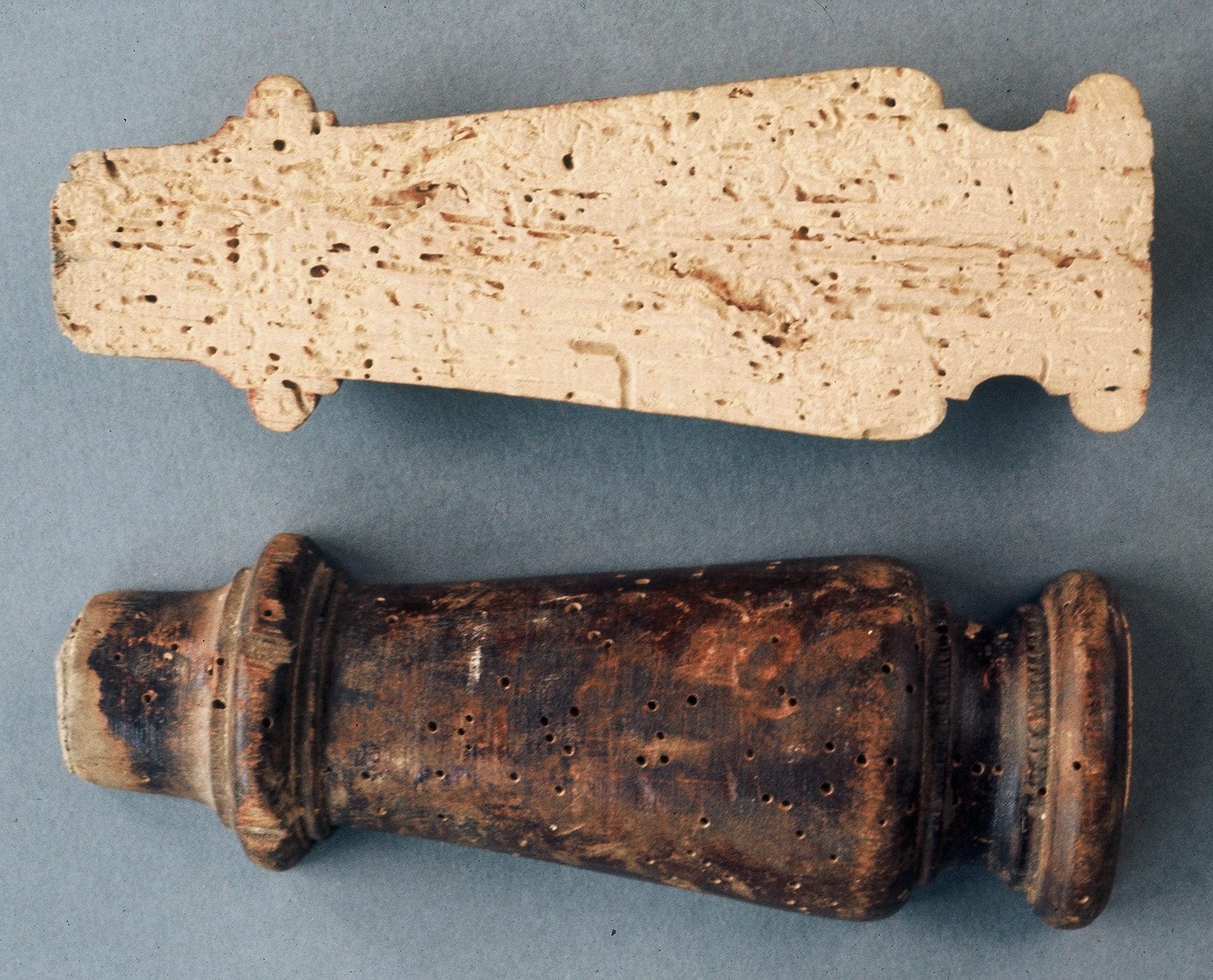Families of wood-eating insects: the Beetle, the Woodwatch

The Large and Small Beetles, wood eaters
The furniture beetle is awood-eating insect belonging to the Anobiidae family.
Two species of furniture beetle are found mainly in dwellings and can coexist: the small furniture beetle (“anobium punctanum”) and the large furniture beetle (“xestobium rufovillosum”).
The larvae of these beetles, which are particularly fond of hardwood and softwood species, attack timber and flooring, as well as woodwork (old books, antique furniture, paintings, etc.).
A keen follower of very damp wood, the larva of the Deathwatch is particularly adept at attacking wood in which cubic or fibrous rot fungi have already developed.
The larva of the furniture beetleis particularly fond of antique wooden furniture and works of art.
Adult furniture beetles can also be found on window sills from spring onwards, as they are also very attracted to light.
The larval development period of the furniture beetle varies according to :
- The nature of the wood in which it is found: species with perfect hardened wood have a very high nutritional value in terms of sugar and nitrogen, mainly the sapwood, which is softer and more easily degradable
- For the death watch beetle, the type of fungus present in the wood it attacks, which gives the wood its nutritional value
- Temperature (between 20 and 25°C is optimal) and humidity (at least 22%)
- The furniture beetle larva (which measures between 5 and 7 mm for the small furniture beetle and up to 11 mm for the large furniture beetle) can be distinguished by its creamy white colour, its three pairs of legs, its arched shape and the abundant blond hair covering its body.
- It gives rise to a perfect insect with a longer, stockier body and a dark brown colour.
- Its main physical feature is the bonnet that covers its head – triangular in shape and rounded at the corners, with antennae at the tip.
- The elytra (a type of carapace that protects the wings and rises in flight) of the death watch beetle are covered in whitish-yellow hairs.
- The death watch beetle is easy to distinguish from other death watch beetles because, as its name suggests, it is larger.
- When they reach adult size, males are smaller than females.
Beetle larvae attack wood
A female furniture beetle lays an average of 100 eggs, which she lays in wood in groups of 2 or 3 inside cracks, fissures or rough surfaces such as the walls of her old galleries.
It only lays its eggs where the wood has been infested by a fungus:
- because it deteriorates the consistency of the wood, making the tunnels easier to dig
- because it enriches the wood in nitrogen, which is a gas essential for the development of the larva
They always appear with the arrival of spring, between April and May in the case of the death watchbeetle, and between May and September in the case of the furniture beetle.
A number of signals can be used to detect the presence of the female death watch beetle
- During reproduction, the female generates a regular, dry noise by banging her head against the walls of the galleries she has dug in the wood, so that the male joins her to mate.
This has earned them the nickname “the death clock”. - Attacks by furniture beetles form circular exit holes in the wood.
The small beetle is 1 to 3 mm long, while the large beetle is 2 to 4 mm long.
The moulds of the furniture beetle are very small, cylindrical and elongated, while those of the death watch beetle are rounder, larger and resemble tiny lentils.
As with other wood-eating insects, it is obviously important to treat the wood to prevent any attack or recurrence of the beetle.